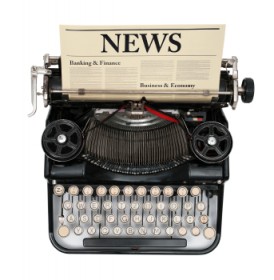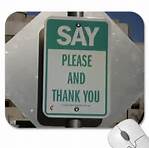Three themes stood out over the past few weeks: the obvious one of new year’s resolutions and predictions; our skill or lack of it with the English language and of course the Court of Human Rights ruling in favour of an employer who monitored an employee’s personal emails.
2016 predictions and resolutions
 Set goals rather than resolutions. Did you set yourself up for failure just a week into the new year by setting a series of new year’s resolutions which within a week you had broken? Well it turns out that it is better to establish some SMART goals against which we can monitor our progress. It’s never too late to re-calibrate and set new goals.
Set goals rather than resolutions. Did you set yourself up for failure just a week into the new year by setting a series of new year’s resolutions which within a week you had broken? Well it turns out that it is better to establish some SMART goals against which we can monitor our progress. It’s never too late to re-calibrate and set new goals.How clearly do you communicate?
Monitoring employee’s personal emails
Tags: corporate email etiquette, corporate email overload, cyber crime, Lucy Kellaway, Mesmo Consultancy, SMART goals

Email PEARLS for brilliant email etiquette
Are your emails PEARLS designed to send the right message right first time or lead balloons which might lead to an impending email disaster?
PEARLS are good corporate email etiquette and will enhance your digital dress code just like real ones can add a touch of glamour to anything from jeans to haute couture.
Click here to check your email etiquette.
Tags: corporate email etiquette, email etiquette, Email PERALS
A recurrent question with clients has been how much information to include in your email signature block (from company logos and awards to the full postal address).
Recently I received an email where the logos and awards included in the signature block amounted to nearly 35KB which was more than both the content and the attached Word file. Three emails like this and that’s a third of a MB of unwanted storage space. I diligently deleted all the offending images in order to keep my inbox slim. Overweight email signature blocks are one of my pet peeves!
What constitutes good email etiquette for an email signature block? We are all looking to create a professional image which makes our email stand out in an ever crowded inbox. Including logos in an email means that you can:

• Impress clients with your awards;
• Reinforce your brand logo.
However, the downsides are that such images:
• Add to the size of the email and hence take up more storage space.
• Mean the email takes longer to download (as its bigger than it needs to be and not everyone has access to superfast broadband).
• Are often seen as spam and cause important emails to be trapped and quarantined.
• Not always rendered properly and can look naff (given the range of devices people use to read their email).
The other aspect of the email signature block is how much information to include. My other pet peeve is an email where the contact information is longer than the message itself. One 11 line email had a 23 line block as the sign off (person’s title full contact details etc) and it is on every email entry. How to annoy the recipient very quickly.
Always include as a minimum a contact phone number. After three rounds of email ping-pong, the other person might want to phone you. They too are time poor and if they cannot see a phone number quickly and easily, they will default to email which is often unproductive for everyone (and especially if building a new relationship is involved).
Conversely, not everyone needs all your contact details ie address, fax, mobile etc. So don’t clutter up the email with unnecessary verbiage. Be selective. As default, use the minimum (ie name and phone number) and only insert your full details when asked.
Small is beautiful for email and is the best form of email etiquette. This means the minimum of size and content. A good website, not an email is the place to project your corporate image, company values etc and full postal address.
For more on corporate email etiquette and especially how to close an email see previous blogs and of course ‘Brilliant Email’. If you still have any questions and need help, call us and ask about our Brilliant Email masterclasses.
What is your pet peeve?
Tags: corporate email etiquette, email best practice, email etiquette, Email signature block, Outlook
In the final part of this series of interview with David Grossman, he reviews what are the barriers and drivers to creating a more effective email communications culture.
Monica: What do you see as the principle issues restricting the use of email within organizations?
David: Limiting email and reducing abuses is a step in the right direction, especially for middle managers.
We conducted research of 1,100 executives, senior leaders, managers, and employees on their perceptions of e-mail.
Our 2012 email perception study, “Enough Already! Stop Bad Email,” shows that when it comes to email overload, it’s the middle managers who feel the most pain:
And yet, they don’t want their ability to use email taken away or even interrupted. 83 percent of middle managers agree that email is an effective and necessary communication tool, and only 15 percent said that limiting email during normal business hours would be very effective. Our research suggests that to melt the iceberg that is the “Frozen Middle,” companies need to do a few things:
All that said, limiting email and stopping abuses isn’t the ultimate solution to improving employee engagement, work-life balance, and productivity. Really, it’s a Band-Aid because the much larger issue is about ineffective communications inside organizations today, which is negatively affecting business results. That means leadership needs to assess and improve the overall communication system for the organization.
Monica: How can we improve this situation – top three tips.
David:
For more information on email overload, its effects on the frozen middle, and additional tips, visit our Email Research and Resource Center.
David Grossman, ABC, APR, Fellow PRSA helps leaders drive productivity and get the results they want through authentic and courageous leadership communication, a sought-after speaker and advisor to Fortune 500 leaders. A two-time author, David is CEO of The Grossman Group, an award-winning Chicago-based strategic leadership development and internal communication consultancy; clients include: DuPont Pioneer, Lockheed Martin, McDonald’s, Motel 6 and Tyco, to name a few.
Tags: Clean Inbox, clean out your inbox week, corporate email etiquette, David Grossman, email communications, email overload, The Grossman Group
What does bad email etiquette cost you? This question was prompted by the wonderful story yesterday of a French Café who charge polite customers less for coffee. This generated a request from BBC Radio Solent’s Julian Clegg to talk about whether or not manners maketh man. (Interestingly, a quote from Willian Wykeham Bishop of Winchester around 1366)
Coincidentally, yesterday too I was asked if it was acceptable to reply to an internal email without including a salutation. All Mesmo Consultancy’s research shows that if you add a salutation and a few polite words you are more likely to receive a reply from the other person than an email with just a one line question. For example ‘ Please can you let me have the sales figures. Thanks’ will engage the other person more than the bald statement ‘Let me have the sales figures’.
This is perhaps not surprising in the digital age where physical interactions are on the decline and we come to rely increasingly on digital interaction. How we write emails and social media posts is our ‘e-dress code’. It portrays a picture of you for better or worse.
Email etiquette which Mesmo Consultancy finds conveys a bad image include:
In the lean world of business, we need to draw out the best in the people with whom we work. Displaying arrogance in our emails and social media posts in not an option. Moreover in such a noisy world we also need both to make ourselves stand out and find ways to work with those who prefer ‘Quiet’. Good email etiquette can help. Good email etiquette costs you nothing (well maybe a few seconds more to write the email) but helps you gain friends rather than enemies.
Use our free on-line ‘Email Etiquette’ benchmarking tool to see what image you create and how well you engage through email with others. Still need some help than ask us about how our corporate email etiquette training which has helped others can help you win more business.
Tags: BBC Radio Solent, corporate email etiquette, email et, email etiquette, email salutations, Julian Clegg, Mesmo Consultancy